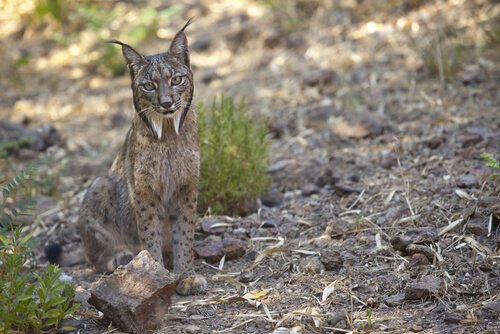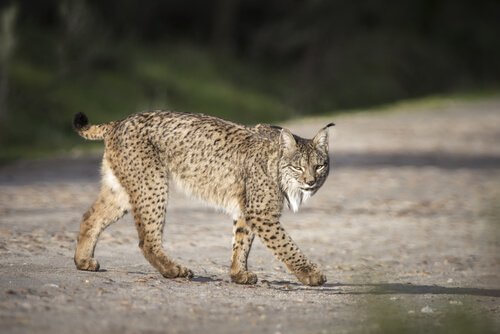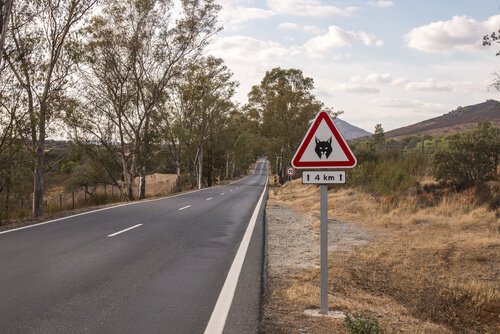Breaking News: An Iberian Lynx in Barcelona?

On May 29th, 2018, the alarms went off in Barcelona after people spotting an Iberian Lynx. A few citizens reported sightings and the Catalonian government’s environmental protection agency managed to snap a few photos of this species that’s in danger of extinction.
It has been over a century since the last Iberian Lynx sighted in Barcelona or Catalonia in general. A lot of people thought it was a Eurasian Lynx that had escaped from the zoo. However, that species is much much bigger and have brighter, sharper-colored fur.
Did they capture the Iberian Lynx in Barcelona?
About four days after the sighting, a team of Iberian Lynx conservation specialists set out to try to catch it. They wanted to see if there would be any way of returning it to its natural habitat. But they knew that either way, it couldn’t stay in Barcelona.
On June 6th, the team finally managed to capture Litio, the male Iberian lynx in Barcelona, in a county just south of the city. The conservation team is really cautious not to reveal any details of the animal. They said that Litio is now safe and sound due to the rabbit cage-traps they used to catch him.
What’s going to happen to the Iberian Lynx in Barcelona?
The Iberian Lynx team’s goal is to transfer the animal to one of the Lynx breeding centers in Andalucia. That way they can observe the animal and run any necessary tests and make sure it’s healthy before getting released back into the wild.
Afterward, the team plans on setting it free in Portugal, far away from urban areas like Barcelona. This lynx was lucky that a car didn’t run over him while he was in the city. Another option would be to let him go in the Sierra Morena, in southern Spain. They could even send him to one of the protected areas for this species, with plenty of space and nothing that would put these animals in danger.

How is it possible for the animal to make it all its way to Barcelona?
Litio had a GPS collar, like a lot of Iberian Lynxes that are raised in captivity. They put it on him in 2014, when they set him free in southern Portugal. However, the device stopped working at some point in 2016, while he was still around that same area.
Incredibly, he traveled about 1,000 kilometers (620 miles) away in just two years. The collar wasn’t sending data, but the conservationists hope it saved the information so they can retrace his amazing journey.
Litio’s story isn’t that much different from Kentaro’s. Kentaro was a lynx that somehow made it to northern Portugal from the mountains of Toledo. His curvy route took him over 3,000 kilometers (1,860 miles) through the northern parts of Spain and down into Portugal.
However, Kentaro’s story has a sad ending. At the end of his journey, he was hit by a car near Porto. It seems like Litio’s story has a happier ending. Hopefully, he doesn’t make another dangerous journey after they set him free.

Why did they set the Iberian Lynx free?
Iberian lynx breeding centers have been extremely effective. This is clear from the fact that they set hundreds of them free every year, some of which come from zoos.
They raise these lynxes in the wild, which helps the species grow. The Iberian Lynx is the most endangered lynx species. It’s apparently also one of the most endangered species of all great cats, along with the Amur Leopard.
Unfortunately, the Iberian Lynx is still at struggling to survive. Rabbits have been dying off from disease, which leaves these lynxes without their main food source. Likewise, there aren’t enough wildlife crossings to let these animals cross roads safely.
Illegal hunting and poisoning aren’t a major issue for this species anymore but we still have to do what we can to protect each and every one of them. Keeping their gene pool diverse and productive is vital for their survival.
